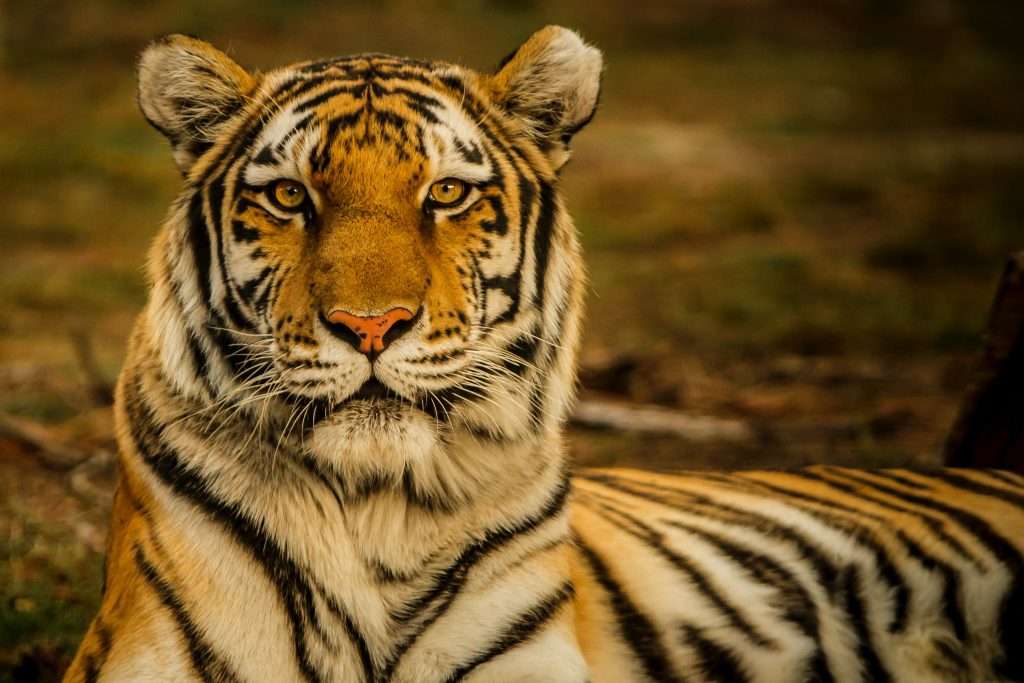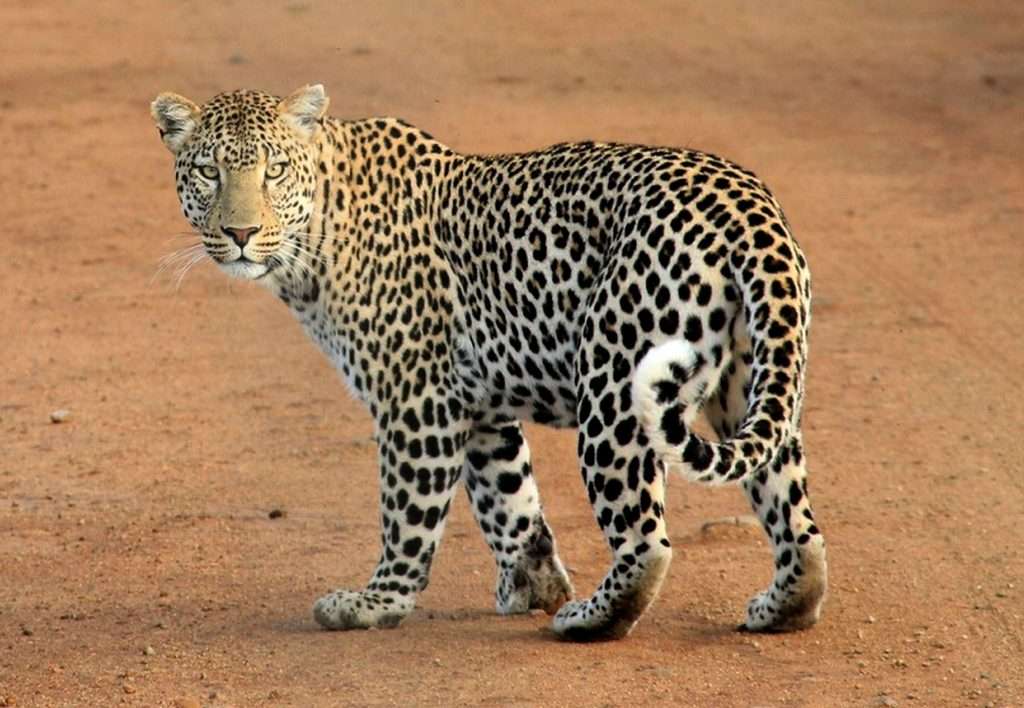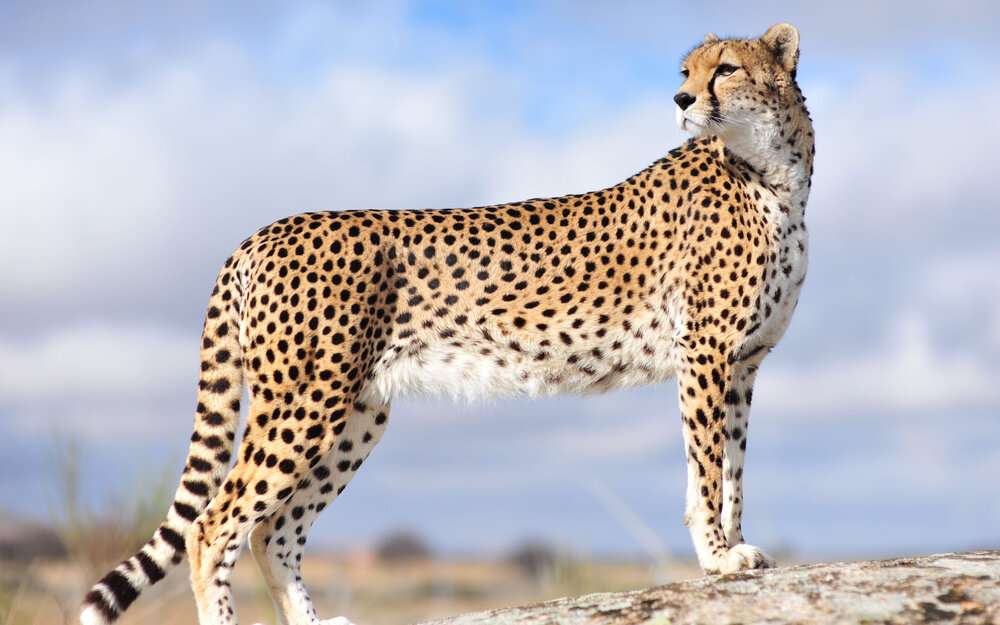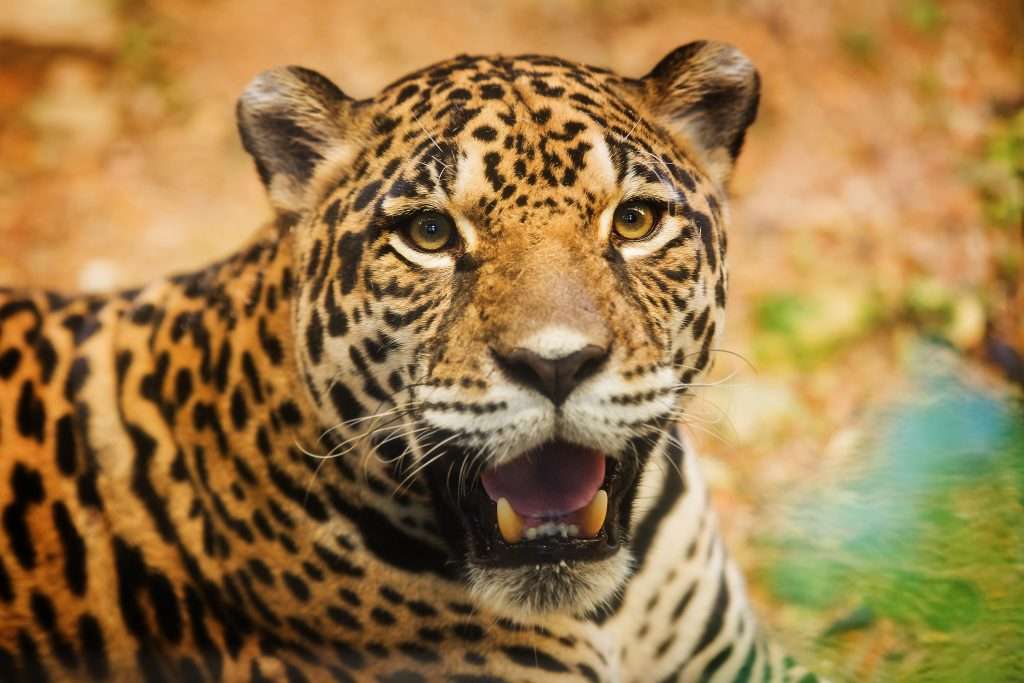
The Ultimate Guide to Big Cats: Lions, Tigers, Leopards, Snow Leopards & Jaguars
Welcome to the thrilling world of big cats—some of the most awe-inspiring animals that roam our planet. These majestic creatures stir our imaginations with their powerful grace and intriguing behaviors. Have you ever listened to the deep roar of a lion or seen the stealthy, silent steps of a tiger in the wild? For centuries, big cats have fascinated us with their extraordinary abilities and sheer beauty.
This guide is your passport to discovering amazing facts about lions, tigers, and other regal big cats. We’ll uncover their scientific names, explore their diverse habitats, dive into details like sizes and weights, and even learn about their conservation status. Get ready to embark on an exciting journey into the wild world of these incredible animals. Let’s unleash some fun and fascinating big cat facts together!
What Are the Big Cats?
Big cats are the larger members of the wild feline family, known for their impressive size and strength. The term “big cats” generally includes five main species: lions, tigers, leopards, jaguars, and snow leopards. However, the cheetah and cougar are often included as big cats due to their similarities. All big cats share key features like sharp claws, strong jaws, and exceptional hunting abilities. They live in a variety of environments around the world, from the savannas of Africa to the jungles of Southeast Asia.
Learning about these cats is not just interesting—it’s essential for understanding their importance in ecosystems and the urgent need to conserve their populations.
Lions
(Scientific name: Panthera leo)

What’s in a name?
The scientific name for the lion is Panthera leo, which comes from the Latin words “panthera,” meaning “big cat,” and “leo,” which means “lion.” Lions belong to the Panthera genus, alongside tigers, leopards, and jaguars.
Lions are also part of the Felidae family, which includes all types of cats, even the ones we keep as pets. Often dubbed the “King of the Jungle,” lions actually mostly inhabit savannas and grasslands—not in jungles!
Lions’ Habitat
Lions primarily reside in the savannas, grasslands, and open woodlands of sub-Saharan Africa. Additionally, a smaller group of Asiatic lions can be found in India’s Gir Forest National Park. These environments offer ample space for lions to roam and hunt, with abundant prey like zebras, wildebeests, and antelopes. The open settings are ideal for their group hunting strategies, enabling them to work together with their pride to take down large prey. Rivers and watering holes are vital, as they provide necessary water sources in the often dry regions.
Understanding where lions live is key to their conservation, especially as habitat loss due to human activities continues to be a significant threat. Protecting these habitats is essential for ensuring the ongoing survival of lions in the wild.
Lion Size and Weight
Lions rank among the largest of the big cats. Male lions typically weigh between 330 and to550 pounds and can grow up to 10 feet in length, including their tail. Female lions are smaller, weighing around 265 to395 pounds and measuring up to 9 feet in length. Lions stand about 3 to 4 feet tall at the shoulder, and their size and weight can vary based on habitat and prey availability.
Male lions also sport impressive manes that can make them appear even larger. These features make lions formidable predators, capable of taking down large animals like buffalo and giraffes!
Endangered Status of Lions
Lions are listed as vulnerable on the IUCN Red List of Threatened Species, with their populations having drastically declined in recent decades due to habitat loss, human-wildlife conflict, and poaching. Currently, only about 20,000 lions remain in the wild. The situation is incredibly sad for Asiatic lions, with fewer than 700 individuals left in India’s Gir Forest. Conservation efforts are essential to keep them alive for future generations. Efforts include habitat preservation, anti-poaching measures, and programs to reduce conflicts between lions and local communities.
Fun Lion Facts
- Lions are the most social of all big cats, living in groups called prides, which typically consist of related females, their cubs, and a small number of males.
- Lions are highly territorial and use roaring as a way to communicate their presence, asserting dominance and preventing conflicts by marking the boundaries of their territory.
- Female lions are the primary hunters of the pride and often work together to corral and take down prey, which can include large animals like wildebeests and zebras.
- Male lions are famous for their distinctive manes, the fullness and color of which can indicate the lion’s age, health, and hormonal status, playing a key role in attracting mates.
- Lions are classified as vulnerable on the IUCN Red List, facing threats from habitat loss, human-wildlife conflict, and reduced prey availability due to overhunting by humans.
Want to learn more about lions? Check out The Ultimate Lion Book for Kids.
Tigers
(Scientific Name: Panthera tigris)

What’s in a Name?
The tiger’s scientific name, Panthera tigris, originates from “panthera,” meaning “predator of all animals,” and “tigris,” Latin for “tiger.” This name underscores the tiger’s distinguished role among big cats. Tigers are categorized into several subspecies such as the Bengal tiger, Siberian tiger, and Sumatran tiger, each adapted to specific environmental conditions. This classification is crucial for researchers and conservationists in studying and protecting these majestic animals, offering insights into their varied adaptations and survival strategies.
Tigers’ Habitat
Tigers are adaptable creatures found across diverse Asian landscapes, from India’s tropical forests to the cold climates of Russia. They thrive in areas that provide ample cover for stalking prey and have easy access to water, as they are strong swimmers.
Size and Strength
Tigers are the largest of all big cats, with sizes varying significantly among subspecies. The massive Siberian tiger can weigh up to 660 pounds and stretch up to 11 feet long, while the smaller Sumatran tiger might weigh between 220 to 310 pounds. This size advantage allows tigers to take down large prey such as deer and wild boar, showcasing their power and agility as top predators.
Conservation Challenges
Listed as endangered, tigers have seen over a 95% decrease in their population in the last century, with fewer than 4,000 individuals left in the wild. The threat of extinction is sadly very real due to habitat loss, poaching, and human-wildlife conflict. Conservation efforts such as habitat preservation, anti-poaching measures, and breeding programs are critical to halt their decline. Raising awareness and creating protected areas are essential strategies employed by various organizations to save these iconic creatures.
Interesting Facts About Tigers
- Each tiger has a unique stripe pattern, just like human fingerprints.
- Unlike most big cats, tigers are excellent swimmers and often seek out rivers and lakes to cool off.
- Tigers can leap up to 30 feet in a single jump!
- Tigers’ night vision is six times better than humans.
- Tigers communicate with a wide range of sounds, including roars, growls, and a friendly sound known as chuffing.
Learn more amazing tiger facts.
Leopards
(Scientific Name: Panthera pardus)

What’s in a Name?
The leopard’s scientific name, Panthera pardus, combines “panthera,” meaning “predator of all animals” in Greek, and “pardus,” Latin for “spotted.” This name reflects their iconic spotted coats, which help them blend into various environments. As part of the Panthera genus, which includes lions, tigers, and jaguars, leopards share a family tree with some of the most formidable predators on Earth.
Leopards’ Habitat
Leopards are incredibly versatile, living in environments ranging from sub-Saharan Africa to the forests and mountains of Asia. Their adaptability makes them proficient at surviving in forests, grasslands, mountains, and even deserts. They use dense vegetation and rocky outcrops for cover, ideal for stalking prey. Leopards are also skilled climbers, often dragging their kills into trees to keep them from scavengers. Their ability to live close to human settlements sometimes leads to conflicts, highlighting the importance of conserving their diverse habitats.
Size and Strength
Leopards are medium-sized big cats, with males typically weighing 80 to 200 pounds and stretching up to 6 feet long, excluding their tails. Females are smaller. Standing about 2 to 2.5 feet at the shoulder, leopards possess immense strength and agility, capable of hoisting prey several times their own weight into trees to avoid scavengers. Their physical capabilities make them one of the most formidable predators in their regions.
Conservation Challenges
Listed as vulnerable on the IUCN Red List, leopards face significant threats from habitat loss, poaching, and human-wildlife conflict. Certain subspecies, like the critically endangered Amur leopard, have fewer than 100 individuals left. Protecting their habitats and combating poaching are critical to their survival. Efforts to educate communities and enforce wildlife protection laws are essential for the future of leopards.
Interesting Facts About Leopards
- Leopards can carry prey up to three times their own weight into trees.
- Leopards are excellent climbers, able to leap 20 feet horizontally and 10 feet vertically.
- Leopards have great night vision, which is helpful as they are primarily nocturnal hunters.
- Leopards usually live and hunt alone, only coming together to mate.
- Leopards are the most widespread of all big cats, found across Africa, the Middle East, and Asia.
Click here to learn more amazing facts about leopards!
Cheetahs
(Scientific Name: Acinonyx jubatus)

What’s in a Name?
The cheetah is known scientifically as Acinonyx jubatus. “Acinonyx” means “motionless claw,” referring to the cheetah’s semi-retractable claws that provide grip during their high-speed chases. The term “jubatus” points to the mane-like ridge of fur on their necks. While the cheetah is not part of the panthera family, it’s often included in the list of big cats due to its similarities. We’ve included them in this list as we think they’re fascinating!
Cheetahs’ Habitat
Cheetahs are found in sub-Saharan Africa’s open grasslands, savannas, and semi-arid regions, ideal for their high-speed hunting. These areas allow them to spot and chase down prey like gazelles and impalas across vast, open spaces. Although they once roamed parts of Asia, today only a small population remains in Iran. Preserving their natural habitats is crucial for their survival.
Size and Weight
Cheetahs are built for speed, not size. They weigh between 77 to 143 pounds and measure about 3.5 to 4.5 feet long, not counting their tails, which add another 2.5 feet. Standing 2 to 3 feet at the shoulder, their slender, aerodynamic bodies enable them to reach speeds up to 70 mph in short bursts. Understanding these physical traits underscores their status as the fastest land animals.
Conservation Status
Listed as vulnerable, cheetahs face a declining population, now under 7,000 in the wild, due to habitat loss, human conflict, and illegal trade. The Asiatic variety is critically endangered, with fewer than 50 individuals left in Iran. Conservation efforts are crucial and include habitat preservation, anti-poaching measures, and community engagement.
Interesting Facts About Cheetahs
- Mostly solitary, cheetahs come together only to mate and briefly when raising their young.
- Cheetahs can accelerate from 0 to 60 mph in just a few seconds.
- They have large nasal passages and lungs, maximizing oxygen intake during sprints.
- Their distinctive black tear marks help reduce sun glare, improving their daytime hunting ability.
- Cheetahs use purrs, chirps, and growls to communicate, as they cannot roar like other big cats.
Learn more fun facts about cheetahs.
Jaguars
(Scientific Name: Panthera onca)

What’s in a Name?
The jaguar, or Panthera onca, gets its name from Greek and indigenous terms meaning “predator of all animals” and “jaguar” respectively. This big cat, related to lions, tigers, and leopards, is the largest in the Americas, with a habitat stretching from Mexico to northern Argentina.
Where Jaguars Live
Jaguars prefer the dense cover of the Amazon Basin’s rainforests but adapt well to swamps, grasslands, and dry forests, always close to water. They’re excellent swimmers. As deforestation threatens these areas, understanding their habitat needs is crucial for conservation.
Size and Strength
Male jaguars weigh between 120 and 250 pounds and can grow up to 6 feet long, not including their tails. Females are slightly smaller. Known for their strength and agility, these cats can take down much larger prey thanks to their powerful jaws and strong teeth.
Conservation Status
Jaguars are listed as Near Threatened with only about 15,000 left in the wild. They face habitat loss and conflicts with humans, especially in areas where their natural habitat overlaps with farming. Conservation efforts focus on habitat preservation, anti-poaching measures, and creating wildlife corridors.
Interesting Facts About Jaguars
- Jaguars have the most powerful bite of any big cat, allowing them to crush skulls and penetrate hard shells.
- Exceptional swimmers, jaguars often hunt for aquatic animals like fish and caimans.
- Their coats feature distinctive rosettes and spots that help them blend seamlessly into their environment.
- Jaguars are typically solitary animals, coming together only during mating season.
- They mark their territories with scratches and scent to ward off intruders and communicate with other jaguars.
Snow Leopards
(Scientific name: Panthera uncia)

What’s in a Name?
The snow leopard, scientifically called Panthera uncia, is known for its elusive nature. The name “uncia” comes from an old word for “ounce,” originally used to describe this enigmatic cat. As a relative to tigers and lions, the snow leopard thrives in the cold, rugged mountain ranges of Central and South Asia, adept at navigating its harsh terrain.
Where Snow Leopards Live
Snow leopards are masters of the mountainous landscapes, predominantly found in the high altitudes of the Himalayas. They prefer steep, rocky terrains with sparse vegetation, which provides perfect camouflage and ample hunting opportunities. Their habitat is under threat due to climate change and human encroachment, making understanding their living conditions essential for conservation.
Size and Strength
These medium-sized cats weigh between 60 and 120 pounds and measure about 2 feet tall at the shoulder. Despite their smaller size compared to other big cats, snow leopards are muscular and agile, capable of leaping great distances to catch prey. Their thick fur and long tails help them balance and stay warm in their frigid environments.
Conservation Status
Snow leopards are currently listed as ‘Vulnerable,’ with estimated populations of only a few thousand remaining in the wild. They face numerous threats, including poaching, loss of prey, and the impact of climate change on their alpine habitats. Conservation groups are actively working to protect these cats through anti-poaching laws, community conservation projects, and scientific research.
Interesting Facts About Snow Leopards
- Snow leopards can leap up to 50 feet horizontally in pursuit of prey, showcasing their incredible agility.
- Their thick, gray-white coats provide not only camouflage in snowy environments but also much-needed warmth.
- Their long, flexible tails, which can be as long as their bodies, help with balance and are used to cover their noses and mouths during cold weather.
- Snow leopards are loners, rarely seen by humans, which adds to their mystique as the “ghosts of the mountains.”
- Unlike their roaring relatives, snow leopards cannot roar; instead, they communicate with moans, grunts, and hisses.
Learn more about Snow Leopards.
Protecting Big Cats
Sadly, many big cats are at risk of extinction. But fortunately millions of people around the world are trying to change this. While we can’t all be on the ground helping out the big cats directly, there are plenty of things we can do to help. Here are several organizations dedicated to protecting big cats around the world, including lions, tigers, leopards, and others. Visit their websites to learn more about how you can help, from donations and adoptions to simply spreading the word—every little bit helps.
- Big Cat Rescue – Located in Florida, USA, Big Cat Rescue is one of the largest accredited sanctuaries in the world dedicated exclusively to abused and abandoned big cats. They provide a permanent home for these animals and advocate for legislative changes to prevent abuse and exploitation of big cats in captivity.
- Panthera – Panthera focuses on protecting all big cats. They run several programs aimed at conservation of large felines, including the Jaguar Corridor Initiative and the Lion Recovery Fund.
- The Snow Leopard Trust – This organization specifically focuses on the conservation of snow leopards, which are among the most elusive big cats. They work to protect this endangered species through community-based conservation projects, rigorous scientific research, and education programs in countries like Mongolia, India, and Pakistan.
- Cheetah Conservation Fund (CCF) – Based in Namibia, the CCF is a leading organization in research and conservation efforts to save the cheetah in the wild. Their approach includes habitat restoration, human-wildlife conflict resolution, education, and research.
- Global Wildlife Conservation (GWC) – GWC partners with local communities, scientists, and government officials around the world to conserve the habitat of big cats among other critical biodiversity conservation activities. They work on numerous projects to protect the habitats that are crucial for the survival of big cats globally.
These organizations work on various fronts, from on-the-ground conservation efforts and habitat restoration to education, advocacy, and policy changes to protect big cats and their environments.
The Big Book of Big Cats
And if you’d like to learn more about the amazing world of big cats, don’t forget to check out The Big Book of Big Cats. It’s full of amazing facts, gorgeous photos, a quiz and much more.
The Big Book of Big Cats
The Big Book of Big Cats — 100+ Amazing Facts for Ages 7+
Discover the world’s most fascinating big cats with fun facts, beautiful photos, and interactive activities for kids and adults who love wild cats!






